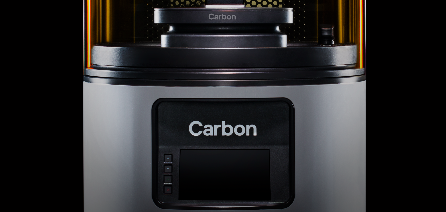Carbon announced their first product, the M1 3D Printer last week, but with a twist: subscription pricing. We calculated how much it could cost you.
I and others were startled when we first saw the pricing sheet provided by Carbon for their new M1. As expected, it involves a subscription, which presumably enables the machine to operate.
One useful method to analyze a purchase is to estimate the “total cost of ownership”, which would sum all the related costs you’re committing to by making a purchase. This is typically much more than the cost of the machine itself.
The basic subscription price for a single machine is USD$40,000 per year, or USD$3,333.33 per month for a period of three years. While the Carbon M1 is a speedy printer, it is a small format machine (only 144 x 81 x 330mm build volume), and the subscription price seems a bit high.
But wait, there’s more costs involved. You’ll also need to pay the USD$10,000 installation and training fee (for onsite service), and also require the USD$12,000 accessories pack and the Cyanate Ester starter pack, if you’re using that particular resin. In all, there are one-time fees of USD$24,000.
There are a couple of printer accessories you’ll likely require: a second build plate at USD$750 per year, plus an extra window cassette (for the resin tank) at USD$5,000/year.
Adding this up for the three year subscription period, you’ll pay USD$161,250.
But wait – this just gets you the machine, and you’ll certainly want to keep it busy printing high quality products at high speed. To compute the total cost of ownership of the M1 we must include the cost of materials.
Materials cost is highly dependent on what you’re printing, how often you print and the type of materials involved. But for purposes of analysis, let’s make some assumptions:
- You print 1 x 800ml of resin every weekday, which should be within the M1’s speed envelope
- You use a variety of resins from Carbon, ranging from USD$99 to USD$399 each, with an overall average of USD$166 per 800ml
Multiplying this out yields an estimate of annual materials cost at USD$43,160, or USD$129,480 over three years.
This brings the total cost of ownership, less operator labor costs, at USD$290,730 for the minimum three-year subscription!
That is indeed a large amount of money, sufficient to purchase multiple other 3D printers and large quantities of material. However, Carbon’s M1 offers a couple of advantages. One is print speed, but as I’ve written previously, there are several other machines with similar print speed.
The other advantage, and what I believe this is all about, is the materials. Anecdotal reports indicate the resins from Carbon are top-quality and offer interesting properties. Presumably, the value of the materials will justify the large total cost of operating an M1 3D printer.
Here’s another way to look at the situation: Suppose you are a 3D print service bureau and wish to use the M1. Typically, the rule of thumb for 3D print service bureaus is to charge around 5X the raw cost of materials for prints, which should account for the costs of materials, equipment, facility, operator labor and, of course, profit.
For our three year scenario, this suggests a 3D print service bureau, in the same scenario described above, would have to charge nearly USD$650,000 over the three year period to clients requesting prints, or about USD$1K in sales per day.
That could be quite challenging for any service bureau, but it could be even more challenging: Imagine an array of a dozen M1’s, requiring a staggering USD$12K in sales per day!
Based on the pricing sheet provided by Carbon, I have a sense that it may be quite challenging for some companies to make the business case for the M1.
That is, unless Carbon demonstrates highly unique and valuable material properties.
Via Carbon (PDF)


